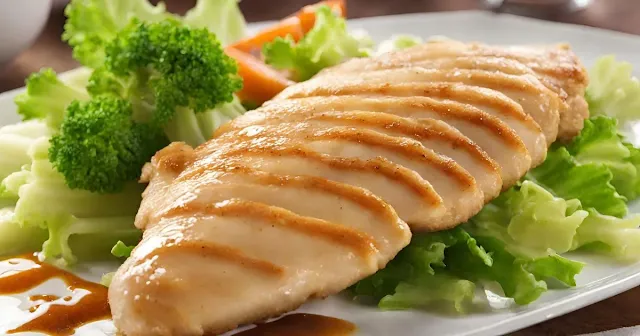Juicy Chicken Fillet Recipes & Cooking Tips
Chicken fillets are a staple in many kitchens, known for their tender texture and versatility in countless recipes. Learning how to prepare them perfectly is a skill that can elevate your home cooking. From succulent grilled chicken to crispy golden fillets perfect for sandwiches or salads, the possibilities are endless. This guide will walk you through the entire process, from selecting the best fillets to ensuring they are cooked to perfection. Whether you're a novice home cook or a seasoned pro, this tutorial is your pathway to becoming a chicken fillet connoisseur.
Introduction to the Versatility of Chicken Fillets
Chicken fillets are the boneless, skinless, lean cuts from the breast of the chicken. They are a blank canvas for flavor, adaptable to any cuisine from Italian to Asian and beyond. The simplicity of its flavor profile allows for a wide range of seasonings and can take you from a classic Sunday roast to a spicy stir-fry. Mastering the chicken fillet is not just about cooking; it’s about understanding how small details can vastly alter the outcome.
Selecting the Perfect Chicken Fillet
Start with a high-quality chicken fillet to ensure the best taste and texture in your dishes. Here's what to look for:
- Appearance: The fillets should be plump and moist, with no signs of excessive liquids or browning.
- Texture: They should feel firm and not slimy. Sliminess is often a sign of spoilage.
- Sourcing: Whenever possible, choose locally sourced or organic chicken, which tends to be fresher and higher in quality.
Preparing the Fillet
Properly prepping your chicken fillets not only ensures even cooking but also speeds up the preparation process. Begin by washing the fillets under cold water and patting them dry with paper towels to remove any excess moisture. Depending on the recipe, you may want to:
- Trim: Remove any excess fat or sinew using a paring knife.
- Butterfly: Cut the fillets horizontally, nearly cutting them in half, and then open them up like a book. This technique creates a thin, even piece of meat ideal for stuffing or quickly cooking.
- Slice: You can slice the fillets into pieces suitable for stir-frying or sautéing.
Seasoning and Marinating
A great marinade or seasoning can take your chicken from ordinary to extraordinary. Here are some tips to ensure your fillets are packed with flavor:
- Balanced Flavors: Aim for a balance of salty, sweet, and acidic flavors in your marinade or seasoning.
- Penetration: Use a sharp knife to make shallow cuts on the fillets before marinating. This allows the flavors to penetrate the meat more effectively.
- Time: Marinate for at least 30 minutes, but no more than 24 hours for best results.
Cooking Methods
There are several cooking methods you can use to cook chicken fillets, depending on the recipe and your preferences. Here's a brief overview of each:
- Grilling: This is a healthy and quick method that imparts a smoky flavor to the fillets. Grill over medium-high heat for about 6-8 minutes per side.
- Sautéing: For a fast and flavorful option, sauté the fillets in a hot skillet with a small amount of oil for approximately 4-5 minutes per side, or until golden brown and cooked through.
- Baking: Baking fillets is a hands-off method that ensures even cooking. Preheat your oven to 375°F and cook for 20-25 minutes, or until the internal temperature reaches 165°F.
- Frying: While not the healthiest option, frying is great for achieving a crispy outer texture. Use a deep fryer or a skillet with enough oil to submerge the fillets, and cook for about 4-5 minutes until golden and the internal temperature is 165°F.
Checking for Doneness
The golden rule for checking if chicken fillets are fully cooked is to use a meat thermometer. Insert it into the thickest part, away from the bone, and look for a reading of 165°F. If you don't have a thermometer, look for the following signs:
- Color: The chicken should be white all the way through, with no pink remaining.
- Juices: When you cut into the fillets, the juices should run clear, not pink or red.
Serving Suggestions
Cooked chicken fillets can be served in a variety of ways. From a simple plating with steamed vegetables to being sliced and folded into a rich pasta or used as a topping on a hearty salad, it can adapt to any meal. Presentation is also key; think about how you can add color and texture alongside the chicken to make the dish more appealing.
Safety Tips
It's crucial to handle chicken fillets with care to prevent foodborne illness. Always remember to:
- Clean: Wash your hands, utensils, and cooking surfaces that come into contact with raw chicken to avoid cross-contamination.
- Cook Thoroughly: Ensure the internal temperature reaches 165°F before serving to kill any harmful bacteria.
- Storage: Store chicken in the coldest part of the refrigerator and use within two days, or freeze for later use.
By following these steps, you can enjoy the succulence of a perfectly cooked chicken fillet, free from any safety concerns.
Conclusion
By taking your time to select and prepare the perfect chicken fillets, experimenting with different seasonings and cooking methods, and being mindful of safety, you're well on your way to becoming a chicken fillet aficionado. Remember, practice makes perfect, so don't be afraid to try a variety of recipes and techniques until you find what you love. Bon appétit!

